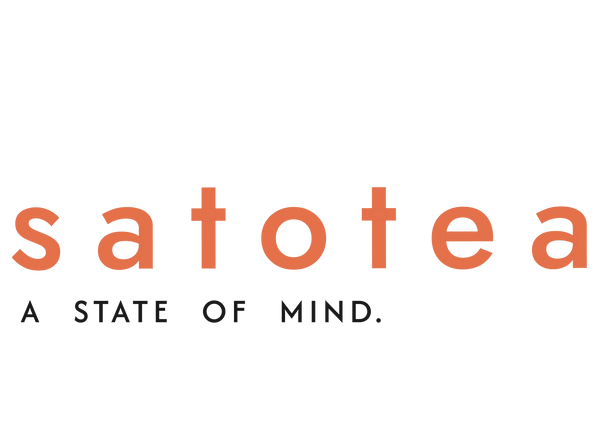Breaking Free from Limiting Beliefs: Cultivating Self-Awareness Through Mindfulness
Shao YūgenWhat Are Limiting Beliefs and How Do They Shape Your Life?
There’s a story about hell: a man carries a heavy stone up a mountain, throws it down, then walks back down to carry it up again—on and on, for centuries. If you were watching from the outside, clear-eyed, you might ask: Why does he keep doing this? But for the one walking, there is no question. There’s only the path in front of him. To him, this is reality. This is the only way.
The loops we find ourselves stuck in—the same pain, the same unanswered questions—are not so different. They are subconscious patterns, quietly running the show.
If life feels like a helpless cycle, and you can’t seem to shift it no matter how hard you try, chances are you’re caught in limiting beliefs rooted deep in the subconscious mind.
Beliefs like:
“I’m not good enough.”
“I’m not worthy of love.”
“I have no other choice.”
Most of the time, we’re not even aware we’re carrying them. That’s why self-awareness becomes such a powerful tool for transformation.
Where Do Limiting Beliefs Come From? A Psychological and Spiritual View
If you’ve ever started a journey of inner work or emotional healing, you’ve probably asked: where do these patterns come from? Psychology traces it through this lifetime—family, childhood, education, social dynamics. Buddhism, on the other hand, zooms out. It speaks of karmic seeds stored in the “eighth consciousness,” waiting for the right causes and conditions to ripen.
Whether or not you believe in past lives, the law of cause and effect is universal: what you plant will grow.
Our early experiences—what our parents said, how we were treated, what society praised or shamed—become the soil of our subconscious. These unspoken messages form internal narratives. Over time, they become automatic thoughts, shaping the way we move through the world. We think we’re choosing freely. Often, we’re just playing out old memory.
The Invisible Loop: How Subconscious Beliefs Repeat Patterns
What we believe, we live. A belief system isn’t just a thought—it’s a structure of thoughts, reinforced through years of emotion and repetition. It filters everything. It becomes the lens. If someone carries the belief “I’m not lovable,” even real love will be distorted. They might reject it, mistrust it, or sabotage it. The belief defends itself. Over time, the belief fuses with identity: "This is who I am. This is how life works."
It stops being a thought. It becomes a truth.
Mindfulness as a Tool for Self-Awareness and Inner Change
That’s why self-awareness, or what some call mindfulness practice, is everything. It’s the key that opens the box where your old scripts live. When we become aware, we see it: "I’ve been here before. I keep repeating this."
So how do we build this awareness?
At its root, awareness is born of stillness—what Buddhist practice calls samadhi or meditative concentration. I explore this more deeply in another post about how meditation works, but here’s the short version:
Stillness trains your attention. It helps you unhook from mental noise. It teaches you to rest. Stillness can be five minutes of sitting. Or it can be quietly drinking tea. In these moments, we interrupt our mental autopilot, and in that pause, we begin to see.
You start to notice:
"Oh. This is how I always respond under stress."
"I do this because, deep down, I’m afraid."
The more your attention stabilizes, the more you begin to connect the dots. A thought leads to a feeling leads to a pattern. Eventually, what once felt like “me” starts to loosen.
The Role of Self-Inquiry: How to Question and Shift Limiting Patterns
Awareness creates space. And space gives rise to choice. Then comes the next key: self-inquiry. Questioning is hard. It asks us to challenge what we’ve long believed to be “me.” But once you start questioning, the loop starts to break.
One afternoon, I had a guest booked for tea. After morning practice, I rushed to shop, cook, eat, and set up the space in under an hour. I was tense, overwhelmed. Then a small trigger almost set me off at my partner. But I caught it. I felt the whole morning’s pressure. And then a voice came:
"Wait. Who put myself in this situation?" I did.
I could’ve skipped the practice. I didn’t ask for help.
Why do I push myself to the edge like this?
Why do I perform helplessness as if it’s my only option?
Suddenly I saw the loop: rushing like I did in school, replicating my parents’ emotional roles, following a script I never chose. Even the thought—if something happened to me on the scooter, no one would be to blame but my own mind—was a moment of piercing clarity.
Reclaiming Inner Freedom by Letting Go of Conditioned Identity
Do you remember being a child—doing things just because you wanted to? That quiet freedom? Then came school. Then came judgment, pressure, fear of making mistakes. Then came the workplace, rent, expectations. We shut down.
Piece by piece, we have distanced us from ourselves. All of us carry layers—expectations, roles, unspoken rules. We don’t just carry them. We become them. Until life feels narrow and tight.
But even a small moment of conscious awareness brings in light. And with light comes freedom.
Conclusion: Real Change Begins with Seeing Clearly
If we learn to meet each moment clearly, if we tend to the soil of the mind, our habits soften. Old beliefs begin to shift. What once felt like “just the way I am” becomes something we can question. And in that quiet shift, we return to something we never lost:
The spacious freedom of being truly awake.
